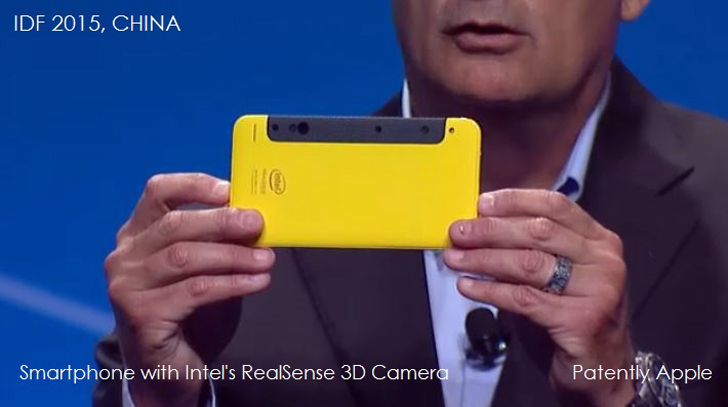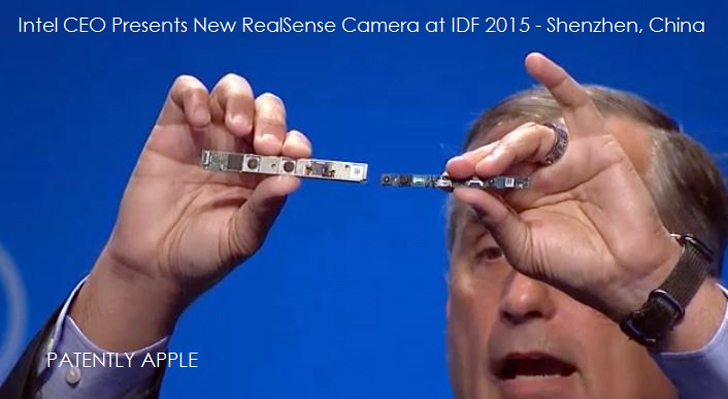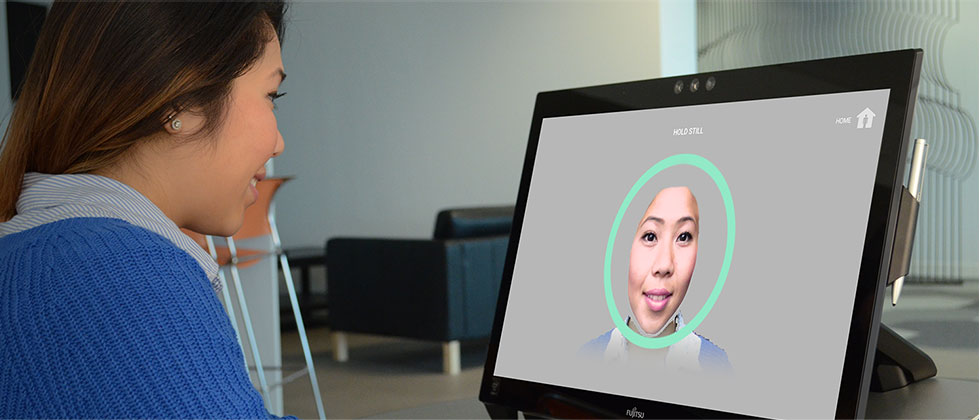Tablet and desktop computer manufacturers have already begun rolling out products featuring Intel’s 3D depth camera, hinting that the next step would be to integrate the RealSense device into smartphones. That day may have arrived as, today, the chip developer has unveiled a version of the RealSense small enough to fit into a 6-inch smartphone.
At the Intel Developer Forum in Shenzhen, China, Intel CEO Brian Krzanich showed off a RealSense-enabled phone that implies the possibility of installing the 3D camera in future smartphones, though it was not shown functioning. It is in the works, however, and it is being developed in conjunction with an unnamed Chinese company.
An Intel spokesperson relayed, “The device which was shown on stage at the Intel Developer Forum was a prototype that was created in collaboration with a Chinese firm, whom we are not naming. The device is meant to show the different types of apps, usage models and form factors that RealSense tech can be integrated into and to encourage innovation.”
The RealSense camera is meant to both allow for depth-based gesture control, as well as the ability to capture 3D scans, which can then be used to 3D print objects or, conversely, bring physical objects into the digital world. And, with a recent deal with 3D Systems, creating 3D printed shelfies has become even easier. They are not the only ones working on such devices, however, as Google’s Project Tango is already available as a Developer’s Kit and features a 3D image sensor from Germany-based PMDTechnologies. Pelican Imaging, in the US, is also working on a 3D sensor for smartphones, funded by chip-maker Qualcomm and Nokia Growth Partners.

I do believe, though, that Intel is the first to get their 3D technology directly into tablets and computers used by mainstream consumers, via the Acer Aspire V 17 Nitro notebook, Lenovo B50 desktop computer, the Dell Venue 8 7000 Series table, and the HP Sprout. The Davies Murphy Group’s Chris Green suggests to the BBC that, in order to get the 3D camera into a smartphone, they’ll need to tackle the issue of power supply: “Intel has obviously achieved half of the challenge involved – the miniaturisation – but what is still unclear is whether it has got the power side of things licked. It’s one thing putting this into a laptop where you have a large battery and access to a mains power source, it’s another to put it into a phone that has to last throughout the day.”
Even with this first demonstration, the size of the device, at six inches, is pretty big for many consumers. And there’s still the issue of the technology actually working well and intuitively. After seeing the HP Sprout at a Microsoft Store recently and knowing the generally finicky nature of 3D printers, I began to doubt whether or not these new 3D technologies are as consumer-ready as their marketing suggests. In general, I’ve been happy with Apple products, experiencing relatively few issues, despite Apple’s closed and controlled nature. I’m starting to think that, even after purchasing Primsense, the Israeli start-up behind the original Kinect 3D sensor, that Apple won’t release a 3D scanning device or 3D printer until they’ve almost perfected these technologies. Still, I hold off on judging the RealSense until I get to see it in person.






